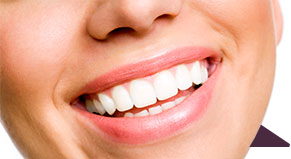Can You Use Too Much Mouthwash?
October 6th, 2016
 Everyone wants to maintain a healthy mouth with minty fresh breath. But if you use too much mouthwash, you might not get the intended results. Studies have shown that when it comes to mouthwash, there can be too much of a good thing.
Everyone wants to maintain a healthy mouth with minty fresh breath. But if you use too much mouthwash, you might not get the intended results. Studies have shown that when it comes to mouthwash, there can be too much of a good thing.
How Much is Too Much?
Dentists often recommend mouthwash as part of a healthy oral hygiene routine. A study of 4,000 people conducted by the University of Glasgow in Scotland found that people who used antibacterial mouthwash more than three times a day had an increased risk of developing mouth and throat cancers. Some dentists also feel that certain types of mouthwash are too harsh and should never be used.
The Consequences of Using Too Much Mouthwash
The Glasgow study showed that excessive use of mouthwash – three or more times a day – correlated with an increased risk of certain oral cancers; that doesn't necessarily mean, however, that using too much mouthwash automatically causes cancer.
People who frequently use mouthwash to clean their mouths and teeth may be at a higher risk for some oral cancers because of poor overall oral hygiene. Some may rely on mouthwash to cover up odors from unhealthy habits such as smoking, chewing tobacco or drinking alcohol, behaviors that are already damaging to the teeth and gums as well as the overall mouth health.
Others may use mouthwash or an oral rinse as a substitute for routine brushing, flossing, and dental visits. While mouthwash can be an occasional “quick fix” to kill bacteria and freshen breath, everyone – particularly those who smoke or drink alcohol – still needs to follow a routine of daily brushing and flossing.
Mouthwashes that are alcohol-based can be dangerous in any quantity because the alcohol destroys the natural mucous in the mouth that should shield and protect the mouth from cancer-causing irritants. Without the natural mucous barrier, a person’s risk of developing oral cancer rises.
A smoker, for example, is already at an increased risk of certain types of cancer. If that person also regularly uses an alcohol-based mouthwash to rinse after smoking, he is repeatedly rinsing out the protective mucous, eliminating the body’s natural defense mechanism and further increasing the risk of developing cancer.
Another problem with using too much mouthwash is that many of the “bad” bacteria are found beneath the gum line, and a quick rinse with an alcohol-based mouthwash will usually only kill the “good” bacteria in the mouth without affecting the potentially dangerous bacteria below. When the good bacteria are gone, the mouth becomes even more susceptible to infections as the harmful elements are allowed to grow unchecked.
Rinsing with an alcohol-based mouthwash eliminates the protective properties of the mouth’s natural mucous production and can also cause the mouth to feel dry. Dry mouth can lead to more bad breath, causing people to reach for more mouthwash. It’s a cycle that, combined with other poor hygiene habits, can put people at a high risk for oral cancers.
How to Properly Use Mouthwash
Dentist recommendations on the use of mouthwash vary based on the dentist and the patient. Those who choose to use mouthwash as part of their oral hygiene regimen should choose a gentler rinse that does not contain alcohol and follow the instructions on the label.
A general rule of thumb for safe use is to limit the use of mouthwash to one time per day, in conjunction with brushing the teeth and flossing two to three times per day and visiting the dentist one to two times per year for routine oral health exams and screenings for oral cancers.
Worried your mouthwash is doing more harm than good? Make an appointment to visit Water Tower Dental Care today! We can take a look at your mouth and recommend a safe mouthwash based on your needs, whether you have a sensitive mouth or need more aggressive care.

 Seeing your gums change from their natural color can be pretty scary. One day you may see healthy pink gums in the mirror, and the next you might notice an ominous purple or brown tint creeping over them. Brown gums or gum darkening could be completely natural based on your ethnicity or aging. But if your gums are suddenly turning purple or brown, it may be a sign that something dangerous is happening inside your mouth that requires professional attention.
Seeing your gums change from their natural color can be pretty scary. One day you may see healthy pink gums in the mirror, and the next you might notice an ominous purple or brown tint creeping over them. Brown gums or gum darkening could be completely natural based on your ethnicity or aging. But if your gums are suddenly turning purple or brown, it may be a sign that something dangerous is happening inside your mouth that requires professional attention. Before and After Gum Disease Treatment Therapy[/caption]
Before and After Gum Disease Treatment Therapy[/caption] Finding a strange change in your mouth can be scary. You might not know why a mark has appeared, how long it will be there, or what it is. Since it could be a variety of different things, ranging from harmless to more serious, it’s important to visit a dentist or doctor when you find an unfamiliar sore or spot in your mouth.
Finding a strange change in your mouth can be scary. You might not know why a mark has appeared, how long it will be there, or what it is. Since it could be a variety of different things, ranging from harmless to more serious, it’s important to visit a dentist or doctor when you find an unfamiliar sore or spot in your mouth. Over the years,
Over the years,  The last thing you want is yellow teeth after years of wearing braces. But unfortunately, it’s a very common occurrence. If you don’t take care of your mouth while you’re wearing braces, you might be surprised to see white squares where your braces were on yellow-stained teeth after your dentist removes them. Thankfully, it’s easy to avoid this experience. Here are some reasons why people get yellow teeth after braces and how to prevent this from happening. We’ll also talk about how you can fix stained teeth after braces.
The last thing you want is yellow teeth after years of wearing braces. But unfortunately, it’s a very common occurrence. If you don’t take care of your mouth while you’re wearing braces, you might be surprised to see white squares where your braces were on yellow-stained teeth after your dentist removes them. Thankfully, it’s easy to avoid this experience. Here are some reasons why people get yellow teeth after braces and how to prevent this from happening. We’ll also talk about how you can fix stained teeth after braces. When your teeth fail you, the last thing you want is your
When your teeth fail you, the last thing you want is your 




 Website Powered by Sesame 24-7™
Website Powered by Sesame 24-7™